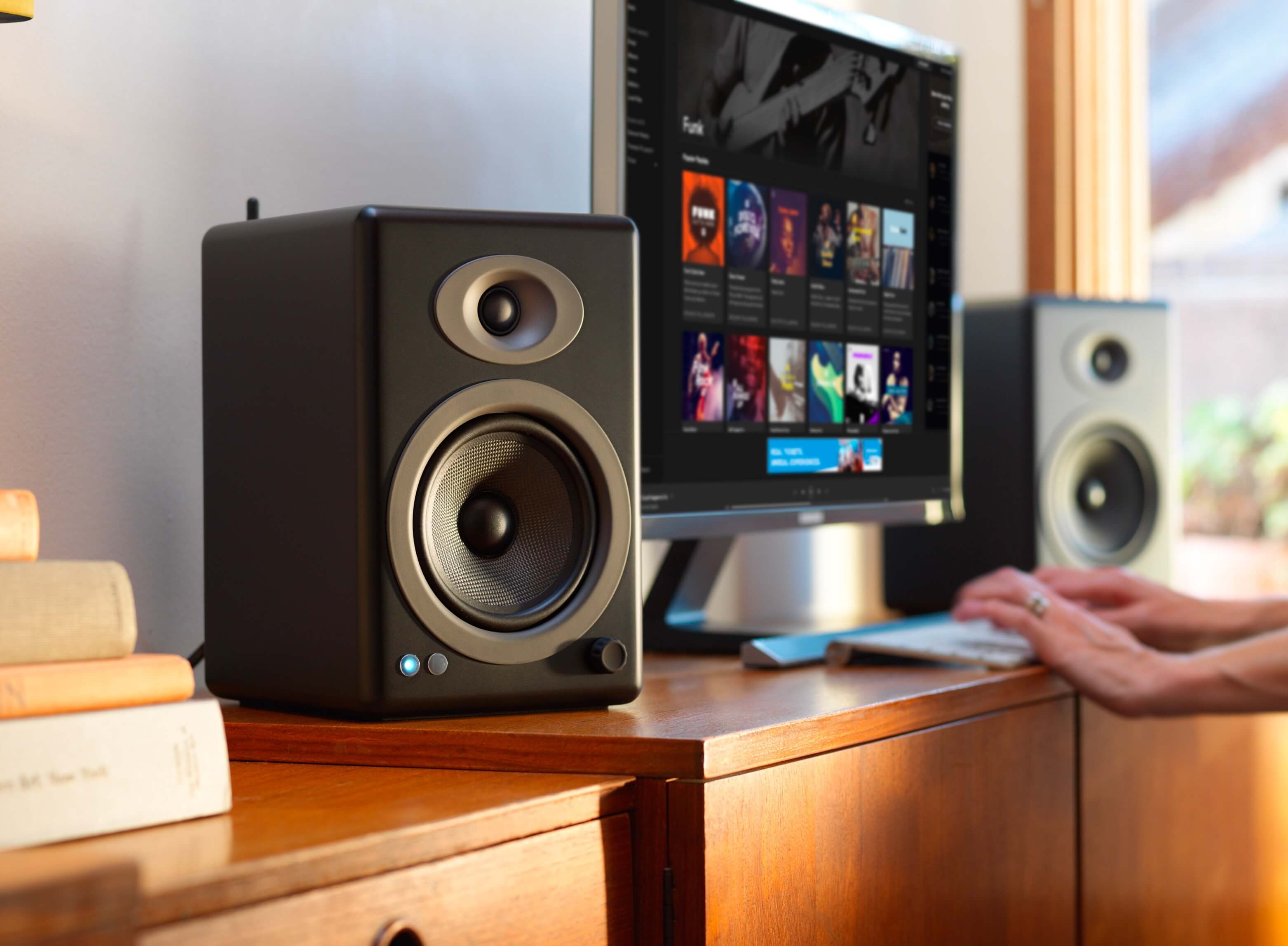See our latest update to this buying guide: The Best Speakers
A good set of speakers is essential when it comes to fully experiencing music, movies, and games on your PC. Over the last decade, many have moved on to listening music on the go, with a multitude form of headphones or portable speakers that play from your phone. And yet there's still plenty of room for those who keep a desktop PC for work, play or both.
The choice of PC speakers has evolved accordingly from standard systems to more audiophile oriented monitors and practical yet refined solutions covering all price segments. We've done the dirty work of researching a wide range of PC speaker offerings to bring you the best options in five major categories that should cover most needs including the best bookshelf/studio speakers, best 2.1 gaming speakers, best audiophile system that includes a subwoofer, and best budget system. The fifth category includes honorable mentions for retro setups, 5.1 speakers, and more.
Best Studio Speakers
Klipsch R-15PM Bookshelf Speakers
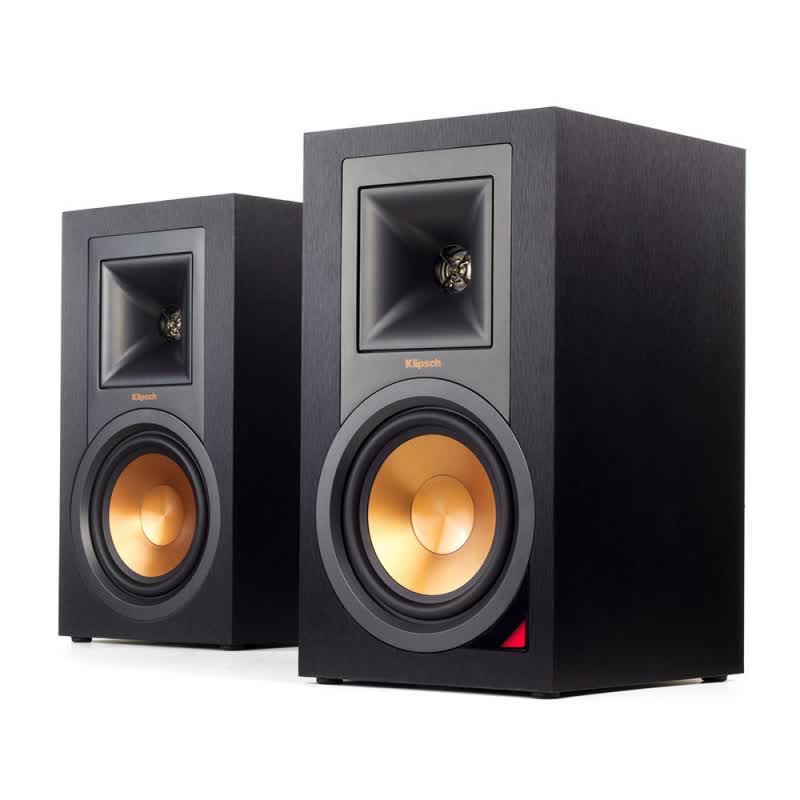
American loudspeaker company Klipsch has been specializing in horn-loaded speakers for over 70 years and its R-15PM Bookshelf Speakers are no exception. Measuring 12.5" x 7" x 8.11" and tipping the scales at 10.3 pounds, this powered speaker system works fully independent of a receiver or amplifier as everything it needs comes built right in.
Each monitor features a 1" aluminum diaphragm compression driver mated to a 90° x 90° square Tractrix Horn alongside a 5.25" copper spun, magnetically shielded IMG woofer delivering 50 watts per channel. It comes packaged in a ported enclosure finished in a black polymer veneer sporting that iconic Klipsch look that most people either love or hate.
The R-15PM's audio quality is matched only by its versatility. Connectivity-wise, you get RCA phono level inputs with a switch for phono / line input, a 3.5mm auxiliary input, an optical input and a USB audio input but the coup de grace is Bluetooth connectivity. There's even an included wireless remote, so you could theoretically use this as your home theater audio system.
A standalone subwoofer isn't required although if you're looking to enhance low frequencies even further, the R-15PM can certainly accommodate via its RCA sub out connection. Klipsch is quick to recommend one of its own branded subwoofers but any powered sub should work just fine.
Steven Guttenberg, CNET's in-house audio expert for the last 12 years, said no one would describe the R-15PM's sound as shy and retiring. "This little guy kicks butt," Guttenberg notes, adding that the "dynamics are lively, rock music had plenty of sock and the wee R-15PMs trumped the similarly sized, but more fully featured Yamaha NX-N500 powered speakers" he had on hand during his audition.
Klipsch has a newer version of this speaker out, the R-51PM, featuring a slightly different design but it's roughly $70 more expensive. We chose the original for this guide and would do the same with our own money as it is still readily available, is more affordable than the revised model and arguably looks better.
A Warm Alternative

For $350, the Edifier S1000DB active bookshelf speakers offer a warmer alternative to the bright and direct sound Klipsch is known for. The sturdy enclosures are only marginally bigger than the R-15PMs - both are sizable, however, so make sure you have ample room on your desk.
The Edifiers feature 1-inch titanium dome tweeters and a 5.5-inch mid-range / bass driver with a frequency response of 48Hz - 20,000KHz and a total power output of 120 watts. Connections are aplenty - optical, coaxial and auxiliary as well as Bluetooth. The control knobs are unfortunately placed on the back of the unit but you do get a remote control so that's an added bonus.
Either way, at roughly the same price, you can't go wrong with either the Klipsch or the Edifiers.
Best 2.1 Gaming Speakers
Razer Nommo Pro 2.1 Speaker System
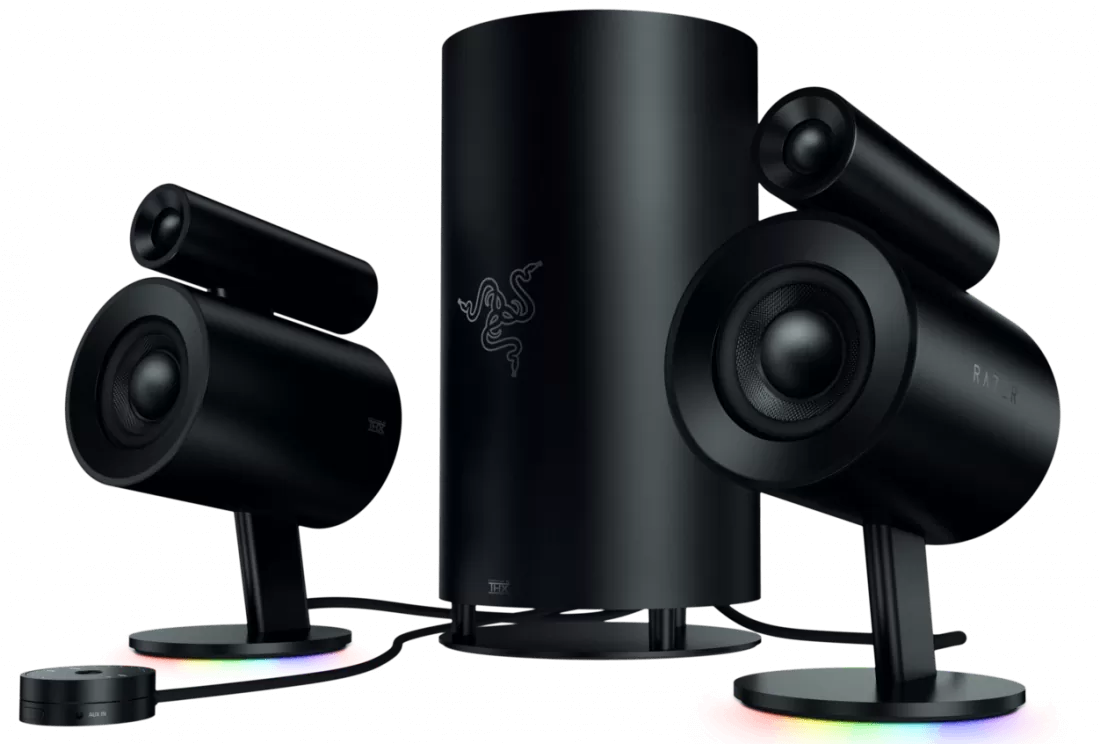
Razer made a name for itself with gaming input devices like the Boomslang, Copperhead and DeathAdder but did you know they've also been catering to audio enthusiasts for well over a decade? This is a fine example of a gaming brand that's in tune with its clientele.
The Nommo Pro 2.1 speaker system is THX certified and features 0.8-inch silk dome tweeters housed independently of the 3-inch DuPont Kevlar-coated mid-range drivers for better separation. This could boost situational awareness in some gaming scenarios. Being a 2.1 system, you also get a sizable 7-inch cylindrical downward firing subwoofer. Connectivity includes Bluetooth 4.3, an optical connection and a USB connection.
It's all fed to a handy wired control pod that sits on your desk, offering convenient access to volume control, input selection and system power. It also features a 3.5mm headphone jack for private listening and a 3.5mm auxiliary jack. There's no standalone wireless remote control although Razer does have a mobile app that enables remote control functionality from your smartphone or tablet.
As a modern gaming system, RGB lighting is a given and the Nommo Pro certainly delivers. Fortunately, Razer has taken a subtle approach with the lighting here as it is limited to the bottom edge of the speaker bases. Best yet, it's fully adjustable so you can control brightness, manage transitions and yes, even turn the lighting off completely should you choose to do so.
Aside from not having a dedicated wireless remote, the other big knock on the Razer Nommo Pro is its price tag. At $499.99, they most certainly aren't cheap and some will argue that you're paying a bit of Razer tax here.
A Worthy Competitor
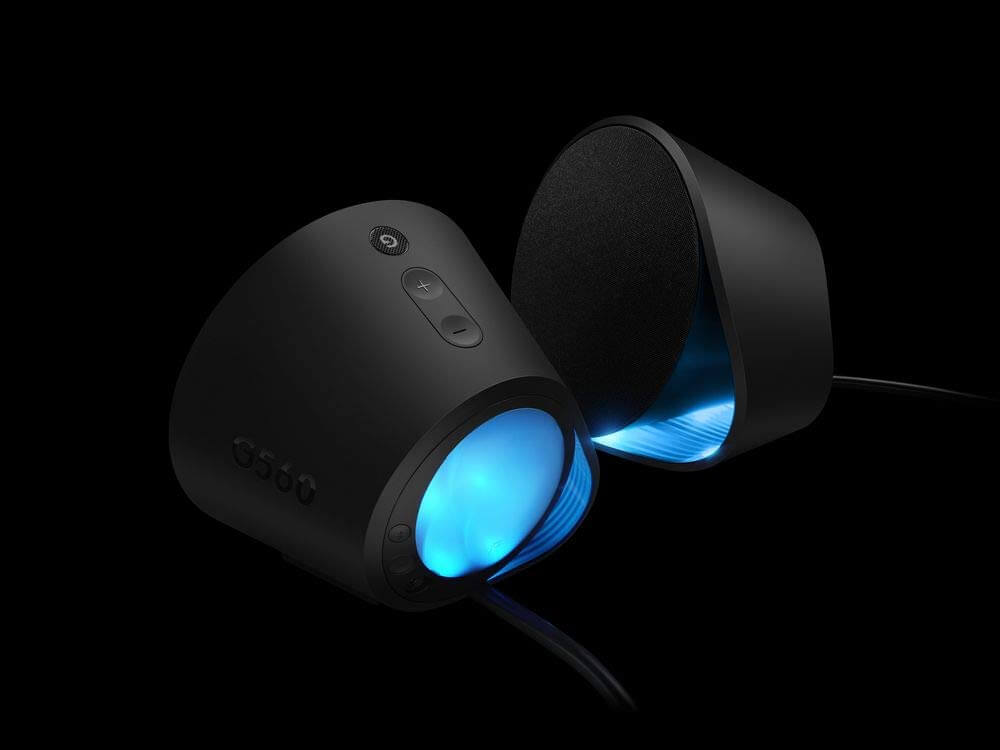
If $500 is more than you're looking to spend on a gaming sound system, consider the Logitech G560 Lightsync Gaming Speakers. For just south of $180, you'll get a competent 2.1 sound system with 240 watts of peak power on tap (120W RMS), a downward firing subwoofer, plenty of connectivity options and yes, RGBs. While the satellites aren't quite as unique looking as what Razer is offering, they aren't exactly commonplace, either.
A Great Audiophile Combo
Audioengine A5+ Speakers
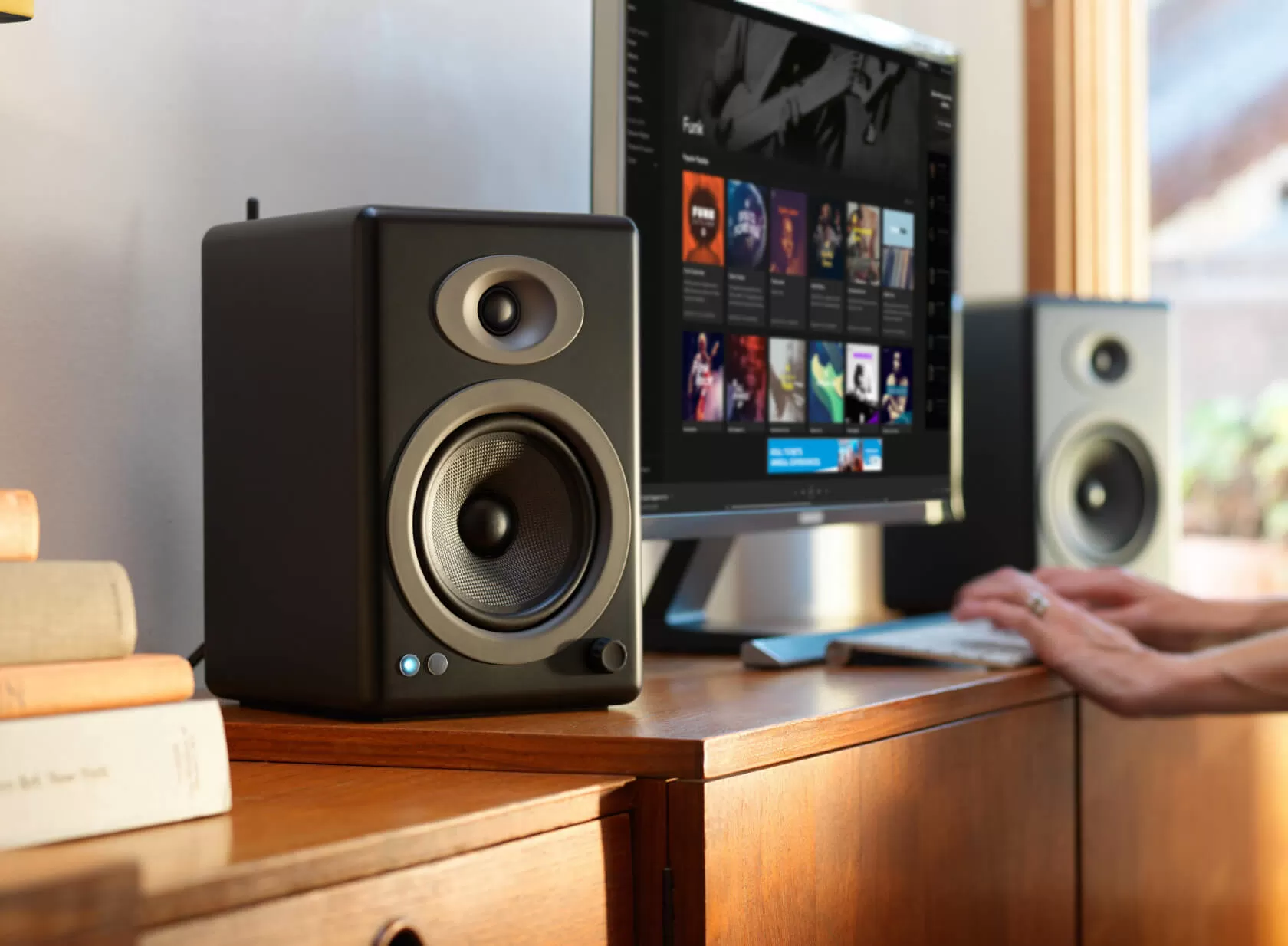
Audioengine's A5+ studio speakers ($399, see full review) have been featured in our Best Speakers roundup before, and for good reason. They afford 150W of peal total power (50W RMS / 75W peak per channel) with a wide 50Hz - 22kHz frequency range. Connectivity options include a 3.5mm stereo mini-jack, RCA left and right inputs and even a USB connector for charging your smartphone or tablet. A separate model adds Bluetooth wireless but that'll set you back an additional $100.
This time, however, we're doing something a bit different by pairing these excellent monitors with a dedicated subwoofer - the Audioengine S8 powered subwoofer ($349). This thumper lays down 250W of peak total power (125W RMS) thanks to its Class D amplifier. It features a single, front-facing port that works in tandem with the custom 8-inch downfiring woofer. Frequency range checks in at 27Hz - 180Hz with an adjustable crossover range of 50Hz - 130Hz.
Over $750 is a lot to spend on a PC speaker system -- especially considering how well the Audioengine A5+ speakers stand on their own -- but this configuration represents the best Audioengine currently has to offer. Adding dedicated bass to a competent, high-end system is only going to push its capabilities further into the stratosphere. With it, you're sure to be the envy of your friends and the bane of your neighbors. Did we mention they look darn good, too, and come backed by a three-year warranty?
Honorable Mentions
Our main picks above try to reflect a good balance of price, sound quality and style in each category, but there are many other quality desktop speakers that are worthy of consideration depending on the features you are after and how well they'll blend in with the rest of your gear.
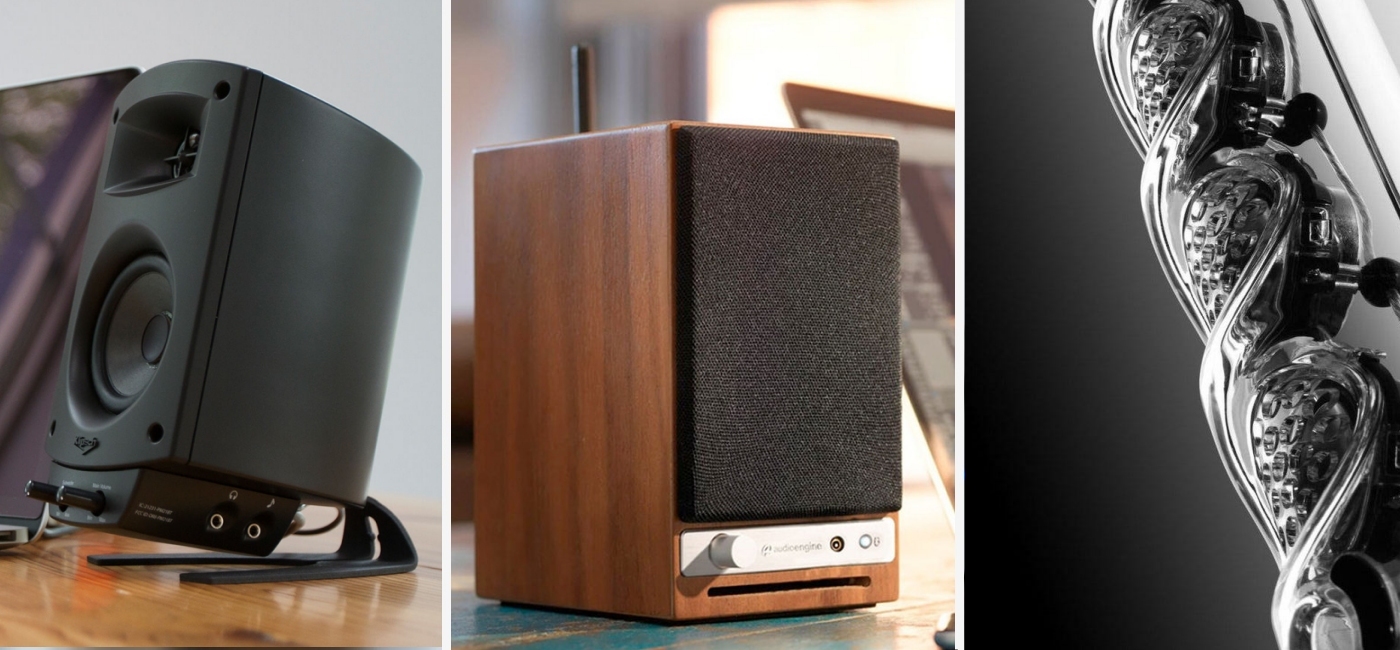
An Instant Classic
We would be remiss for not including the venerable Klipsch ProMedia 2.1 PC speakers in our round-up. This kit has been around in one form or another for nearly two decades. It's a simple 2.1 affair that pumps out stunning sound across games, movies, TV and music.
It looks as though there are two models of the ProMedia's 2.1 on the market. The more affordable pair at $124 offers a frequency range of 35Hz - 22kHz while the more expensive variant at $186 affords 31Hz to 20kHz. If that bit of extra frequency range speaks to you and you've got the cash, spring for the more expensive model. Otherwise, take home a pair of the excellent ProMedia 2.1 THX speakers and enjoy.
Retro Styling
If retro is your jam, Audioengine's HD3 wireless speakers ($349.00) may be worth chewing over. This 2.0 multimedia system affords 60 watts of peak power across a 2.75-inch aramid fiber woofer and a ¾-inch silk dome tweeter with a frequency response of 65Hz to 22kHz. When using Bluetooth, you can also tap into the integrated 24-bit internal DAC for improved audio performance and enjoy a range of up to 100 feet.
Their styling reminds us of the old Creative Sound Blaster SB210 speakers and that's a good thing.
Quality 5.1 Speakers
Logitech has been a category leader in 5.1 surround PC speaker offerings for close to two decades now. The legendary Z680 set a new standard in 2002 with Logitech parlaying its success into the Z-5500s a few years later. Its latest high-end 5.1 system, the Z906, is a bit long in the tooth at this point after having launched back in 2011 but the good thing about that is that they've come down considerably in price. You can snag a new set over on Amazon for under $260 or grab a recertified set for $199.
Futuristic Design
Harman Kardon's SoundSticks III ($160) have been around for a decade but continue to intrigue thanks to a design that looks like it was brought here from another planet. When your predecessor has been featured as part of the permanent collection at NYC's Museum of Modern Art, you know you're dealing with something special and that's the lineage the SoundSticks III share.
The SoundSticks III feature a pair of satellites, each with four 1-inch speakers, and a 6-inch downward firing subwoofer, all of which is housed in clear plastic like some sort of next-level science experiment.
Harman Kardon now also offers a wireless Bluetooth-enabled edition that'll make it easier than ever to stream from your mobile device. It's a bit more spendy as you'll play closer to $220 for Bluetooth versus $160 for the standard system but the versatility may be worth it.
Ultra Budget Option
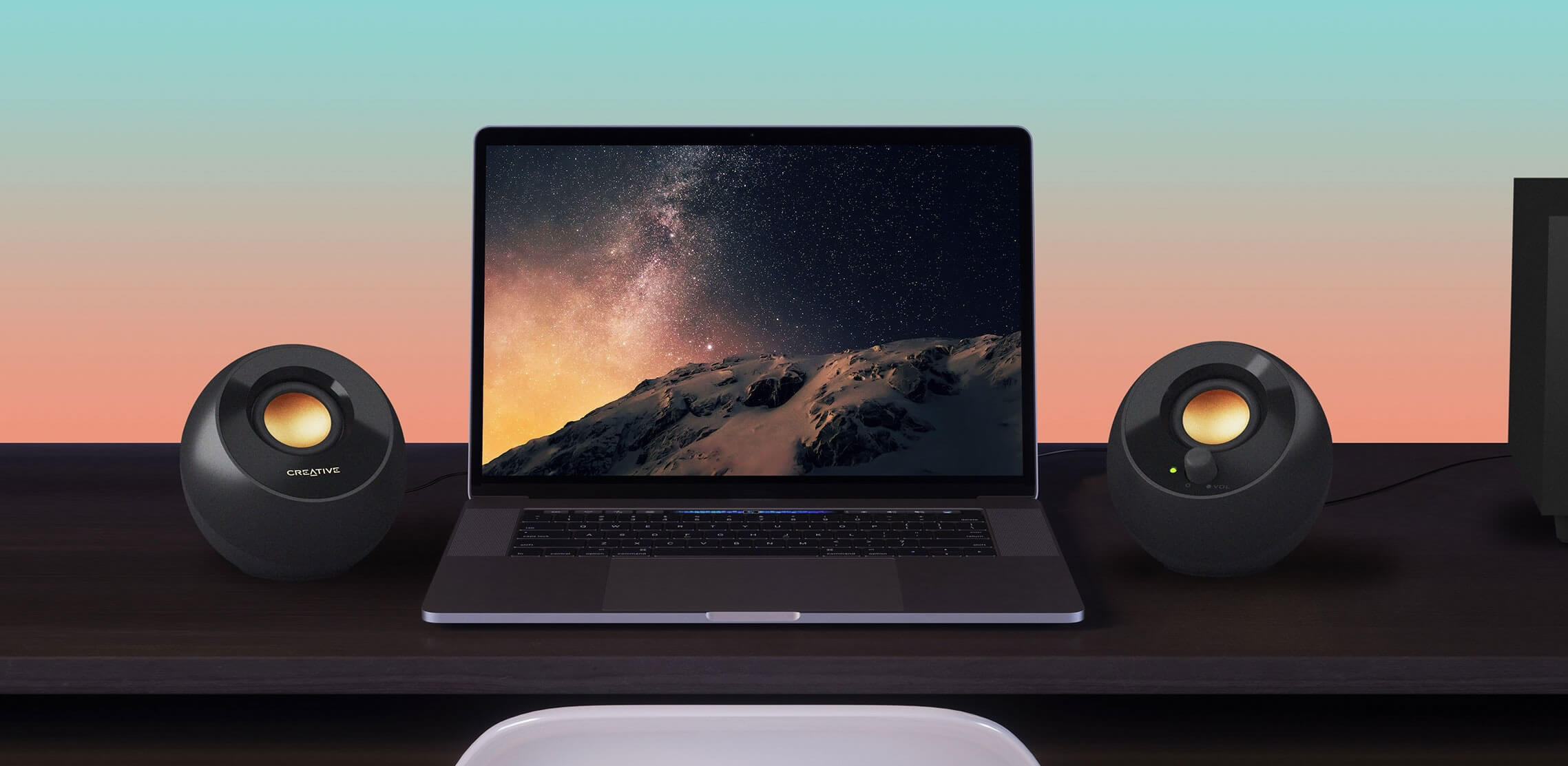
Creative's Pebble 2.0 desktop speakers have redefined what's possible in the ultra budget category. Small but mighty, these USB-powered speakers were inspired by a Japanese rock garden and feature 2-inch full range drivers positioned at a 45° angle. At just 4.5 inches x 4.8 inches x 4.5 inches, they're small enough to toss in a laptop bag for on-the-go enjoyment yet capable enough put a smile on your face.
Creative over the summer launched V2 of these speakers with nearly twice as much power, a longer cable connecting the two satellites and a USB-C to USB-A converter. At $19.99 and $29.99 for the originals and revised model, respectively, you simply can't go wrong. There's even a "Plus" model out that adds a dedicated sub to the mix for less than $40.
Unbeatable for the Price
The Logitech Z623 is simply too good to exclude. At just $120, this THX-certified 2.1 system is a real banger with a total of 400 watts of peak power (200 watts RMS). That breaks down to 130 watts for the sub and 35 watts apiece for the satellites. Integrated controls and a headphone jack are built right into the right satellite while the back of the sub provides multiple RCA and 3.5mm inputs for music, movies and games. The thousands of reviews don't lie – this is a venerable sound system for the price.
